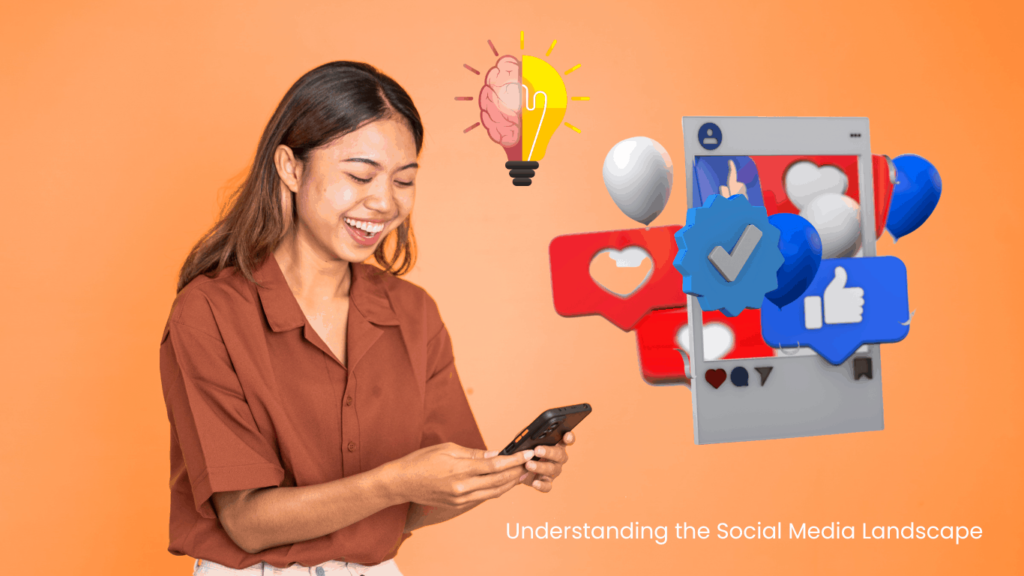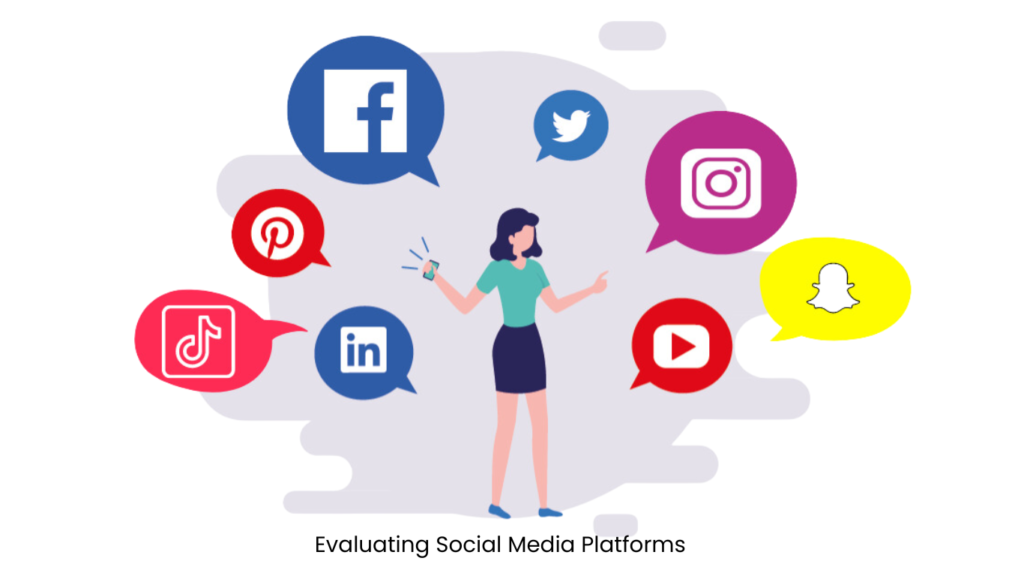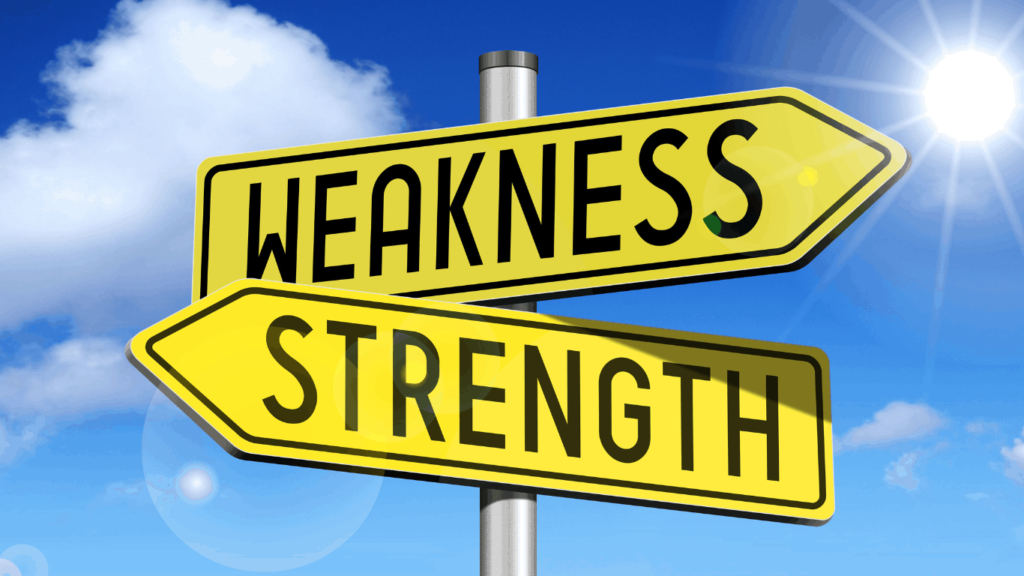In the fast-paced world of digital marketing, the role of social media in business success cannot be overstated. This comprehensive guide is designed to navigate you through the complexities of selecting the most effective social media platforms for your business. By aligning your strategy with key considerations and crafting compelling content, you'll be on the path to mastering social media for long-term success.
◼ Understanding the Social Media Landscape

➤ The Power of Social Media for Businesses:
Social media marketing has undergone a transformative journey, emerging as a cornerstone of modern business strategies. The potential return on investment (ROI) is significant, with businesses experiencing increased brand visibility, enhanced customer engagement, and improved conversion rates through strategic social media efforts.
As platforms innovate and adapt, staying informed about the latest trends and best practices becomes crucial for optimizing your social media presence. The dynamic nature of social media necessitates an agile approach, where businesses can leverage emerging trends and capitalize on shifting consumer behaviors.
➤ Key Considerations for Platform Selection:
Choosing the right social media platforms is a pivotal decision that significantly influences the success of your digital marketing efforts. This decision should be rooted in a profound understanding of your target audience.
◼ Defining Your Target Audience

➤ Demographical Insights
Understanding the demographics of your target audience is fundamental to effective social media marketing. Age, gender, location, and income levels are key factors shaping user behavior on various platforms. For instance, younger audiences might be more active on visually-driven platforms like Instagram and Snapchat, while professionals may engage more on LinkedIn.
Demographic insights allow you to tailor your content and messaging to resonate with your audience. If your target demographic is primarily on Facebook, crafting content that aligns with their preferences and behaviors on that platform becomes imperative.
➤ Psychographic Understanding
Beyond demographics, psychographics delve into the interests, values, and lifestyles of your audience. Are they environmentally conscious? Are they early adopters of technology? Understanding these nuances helps in creating content that not only captures attention but also forges emotional connections.
➤ Online Behavior Patterns
Analyzing online behavior patterns unveils how your audience interacts with content. Do they prefer short, snappy updates, or are they more inclined towards in-depth articles? Observing these patterns across different platforms refines your content strategy, ensuring that it resonates with the way your audience consumes information.
➤ Customer Persona Development
Synthesizing demographical insights, psychographic understanding, and behavior patterns contributes to the creation of customer personas. These personas are fictional representations of your ideal customers, offering a comprehensive understanding of their needs, preferences, and pain points.
Understanding your audience on this level empowers you to tailor your content, language, and visuals to create a more personalized and resonant experience. This, in turn, enhances the effectiveness of your social media campaigns and fosters a deeper connection with your audience.
◼ Evaluating Social Media Platforms:

➤ Facebook: The All-Encompassing Giant
This segment delves into the strengths and weaknesses of Facebook, exploring its robust advertising capabilities and the ability to create business pages and groups that foster a sense of community.
Facebook, with over 2.8 billion monthly active users, stands as a digital colossus. Its expansive user base spans diverse age groups, making it an all-encompassing platform for businesses. From small enterprises to multinational corporations, Facebook provides a versatile space for engagement, advertisement, and community building.
Understanding the strengths and weaknesses of Facebook is crucial for optimizing your presence. The platform's robust advertising capabilities allow for targeted campaigns, ensuring your content reaches the most relevant audience. Moreover, the ability to create business pages and groups fosters a sense of community, enabling direct interactions with your customer base.
While Facebook offers unparalleled reach, businesses should also be aware of the challenges. The sheer volume of content can make it challenging to stand out. Crafting engaging and shareable content is essential to overcome the noise and capture the attention of your audience.
➤ Instagram: Visual Storytelling for Brand Engagement
For businesses with visually appealing products or services, Instagram serves as an ideal platform for brand engagement. This section discusses the emphasis on visual storytelling through images and videos.
Instagram's visual-centric nature makes it a playground for brands looking to tell compelling stories. The platform's emphasis on high-quality visuals allows businesses to showcase their products or services in an aesthetically pleasing manner.
The Stories feature on Instagram provides an opportunity for real-time engagement. Sharing behind-the-scenes glimpses, product launches, or limited-time offers through Stories can create a sense of urgency and exclusivity, driving engagement and brand loyalty.
IGTV, Instagram's long-form video feature, is another avenue for businesses to explore. From product demonstrations to interviews, IGTV enables brands to share more in-depth content, catering to an audience that seeks a deeper connection.
Understanding the predominantly youthful demographic on Instagram informs content creation strategies that align with the platform's vibrant and visual nature. Utilizing popular hashtags, collaborating with influencers, and running visually appealing advertisements contribute to a successful Instagram strategy.
➤ Twitter: Real-Time Conversations and News Sharing
Twitter's unique appeal lies in its real-time nature. This section explores how businesses can leverage Twitter to stay at the forefront of industry discussions and engage with their audience in real-time.
Twitter is the pulse of real-time conversations on the internet. It's the go-to platform for breaking news, trending topics, and instant conversations. For businesses, Twitter offers a unique space to share timely updates, participate in ongoing conversations, and showcase a brand's personality.
The character limit inherent to tweets encourages concise and impactful messaging. Crafting tweets that are informative, entertaining, and relatable is key to engaging your audience on Twitter. Additionally, the use of hashtags can amplify the reach of your content, making it discoverable by users interested in specific topics.
Leveraging trending hashtags and participating in relevant conversations positions your brand within the larger discourse. Whether it's commenting on industry trends, sharing behind-the-scenes content, or running polls to gather audience opinions, Twitter allows businesses to connect with their audience on a personal level.
However, it's essential to recognize that Twitter's fast-paced environment demands consistent and timely interaction to maintain visibility. Regularly monitoring mentions, responding to comments, and actively participating in relevant conversations are integral components of a successful Twitter strategy.
➤ LinkedIn: Professional Networking and Thought Leadership
LinkedIn, often regarded as the professional networking hub, is a powerhouse for B2B interactions and thought leadership. This section provides insights into creating a compelling company page and participating in relevant groups.
LinkedIn is the digital epicenter for professionals and decision-makers. Creating a compelling company page on LinkedIn is the first step toward establishing a strong presence. The company page serves as a digital representation of your brand, offering valuable information about your business, its values, and its achievements.
LinkedIn is not just a platform for self-promotion; it's a space for thought leadership. Publishing long-form articles on LinkedIn allows businesses to showcase their expertise, share industry insights, and contribute to relevant discussions. Regularly publishing content positions your brand as an authority in your field, fostering trust and credibility among your audience.
Participating in relevant LinkedIn groups provides an avenue for networking with industry peers and engaging in meaningful conversations. These groups can be both industry-specific and geographically focused, allowing businesses to connect with a targeted audience.
LinkedIn's advertising options, such as sponsored content and InMail campaigns, provide additional tools for reaching a specific professional demographic. These can be particularly effective for B2B businesses looking to generate leads and establish partnerships.
➤ YouTube: Video Marketing and Product Demos
The popularity of video content has surged, making YouTube an indispensable platform for businesses. This section explores how video marketing on YouTube allows businesses to connect with their audience on a more personal level.
YouTube is the second-largest search engine globally, making it a powerhouse for video content. For businesses, YouTube provides a platform to engage audiences through video marketing, tutorials, product demonstrations, and behind-the-scenes glimpses.
Creating a YouTube channel allows businesses to centralize their video content and build a loyal subscriber base. Consistency is key; regularly uploading high-quality videos contributes to channel growth and audience retention.
Video marketing on YouTube isn't just about creating promotional content. Businesses can leverage storytelling to connect with their audience on a deeper level. Whether it's sharing the brand's journey, introducing team members, or showcasing the production process, storytelling adds a human touch to the brand.
YouTube's algorithm rewards engaging content. Crafting attention-grabbing thumbnails, writing compelling video descriptions, and utilizing relevant tags contribute to the discoverability of your content. Collaborating with other creators and cross-promoting videos on social media can also expand your reach.
Product demonstrations are particularly effective on YouTube. Whether it's showcasing how a product works, providing tutorials, or sharing customer testimonials, videos allow businesses to communicate effectively and visually with their audience.
Understanding YouTube analytics provides valuable insights into viewer behavior. Metrics such as watch time, click-through rate, and subscriber growth help businesses refine their content strategy and optimize future videos.
➤ Pinterest: Visual Discovery and E-commerce Integration
Pinterest stands out as a visual discovery platform. This section discusses how businesses with visually appealing products or services can thrive on Pinterest through visually striking pins and e-commerce integration.
Pinterest is a haven for visual discovery and inspiration. Users often come to Pinterest seeking ideas for various aspects of their lives, from home decor to fashion to recipes. For businesses with visually appealing products or services, Pinterest offers a unique opportunity to showcase their offerings in a visually stunning way.
Creating visually striking pins is essential on Pinterest. Each pin should be a visually appealing and informative snapshot that encourages users to explore further. Pins should be optimized for Pinterest's search algorithm, utilizing relevant keywords and hashtags to enhance discoverability.
Pinterest's boards allow businesses to categorize their pins, creating a visually cohesive profile that reflects the brand's identity. Consistency in branding, color schemes, and themes contributes to a curated and aesthetically pleasing Pinterest presence.
E-commerce integration on Pinterest enables businesses to seamlessly connect with interested consumers. Product pins provide information such as pricing, availability, and direct links to the website for purchase. Leveraging these features transforms Pinterest from a source of inspiration to a direct avenue for conversions.
Understanding Pinterest analytics helps businesses track the performance of their pins and boards. Metrics such as impressions, clicks, and engagement provide insights into what resonates with the audience, allowing for strategic adjustments to the content strategy.
◼ Platform Strengths and Weaknesses:

Understanding the strengths and weaknesses of each platform is crucial for making informed decisions that align with your business goals.
➤ Facebook Strengths:
- Unparalleled reach with over 2.8 billion monthly active users.
- Robust advertising capabilities for targeted campaigns.
- Diverse content formats, including text, images, videos, and live streaming.
- Community-building features through pages and groups.
✦ Facebook Weaknesses:
- High competition for visibility due to the sheer volume of content.
- Algorithm changes can impact organic reach.
- Varied user demographics may require a more nuanced approach to content.
➤ Instagram Strengths:
- Visual-centric platform for brand storytelling.
- Engagement features like Stories and IGTV for real-time interaction.
- Young and vibrant user base.
- Influencer collaborations can amplify reach.
✦ Instagram Weaknesses:
- Limited link-sharing capabilities, impacting direct traffic.
- Algorithm changes affecting chronological content display.
➤ Twitter Strengths:
- Real-time conversations and trending topics.
- Direct interaction with a diverse audience.
- Hashtags for content discoverability.
- Effective for industry discussions and updates.
✦ Twitter Weaknesses:
- Character limit constraints may limit depth of messaging.
- Fast-paced nature requires consistent and timely interaction.
➤ LinkedIn Strengths:
- Professional networking hub for B2B interactions.
- Thought leadership opportunities through articles.
- Targeted advertising options for specific professional demographics.
- Networking groups for industry-specific discussions.
✦ LinkedIn Weaknesses:
- Limited engagement compared to more casual platforms.
- Less effective for B2C interactions compared to B2B.
➤ YouTube Strengths:
- Second-largest search engine globally.
- Versatile content formats, including tutorials, product demos, and vlogs.
- Opportunity for storytelling and audience connection.
- Robust analytics for performance tracking.
✦ YouTube Weaknesses:
- Highly competitive environment, requiring high-quality content.
- Algorithm changes can impact discoverability.
➤ Pinterest Strengths:
- Visual discovery platform for products and ideas.
- Visually striking pins for inspiration.
- E-commerce integration with product pins.
- Categorization through boards for a curated profile.
✦ Pinterest Weaknesses:
- Audiences primarily seeking visual inspiration may limit content types.
- Requires a strong visual element, which may not suit all businesses.
Understanding these strengths and weaknesses empowers businesses to make strategic choices about where to invest their time and resources.
◼ Platform Demographics and Usage Patterns:

Analyzing platform demographics and usage patterns provides valuable insights into where your audience is most active.
➤ Facebook Demographics:
- Diverse user base across age groups.
- Popular among both urban and rural demographics.
- Skewed slightly towards older users compared to Instagram and Snapchat.
➤ Instagram Demographics:
- A predominantly younger audience, especially among teens and millennials.
- Popular in urban areas.
- Higher female user percentage compared to males.
➤ Twitter Demographics:
- Diverse age groups, with a significant presence among adults.
- Popular in urban areas.
- Active among professionals, influencers, and news enthusiasts.
➤ LinkedIn Demographics:
- Professionals and decision-makers across various industries.
- Higher education levels and income brackets.
- Popular among urban professionals.
➤ YouTube Demographics:
- Diverse age groups, but particularly popular among younger audiences.
- Global user base.
- Popular across urban and rural demographics.
➤ Pinterest Demographics:
- Predominantly female user base.
- Popular among older demographics.
- Skewed towards suburban and rural users.
Understanding these demographics helps in optimizing your posting schedule, content strategy, and targeting efforts. For instance, if your target audience is predominantly on Instagram, focusing on visually appealing content and utilizing Stories can enhance engagement. Meanwhile, a B2B business may find LinkedIn more effective for professional networking and thought leadership.
◼ Aligning Your Social Media Strategy with Business Objectives:

➤ Sales: Driving Lead Generation and Customer Acquisition
This section explores how social media can be a powerful tool for driving sales, from lead generation to customer acquisition.
Social media plays a pivotal role in the sales funnel, particularly in the initial stages of awareness and consideration. By strategically showcasing products or services, businesses can generate interest and attract potential customers.
Facebook's advertising capabilities, for example, allow businesses to target specific demographics and interests, making it an effective tool for lead generation. Instagram's visual nature is well-suited for showcasing products in a visually appealing manner, while Twitter's real-time engagement can create buzz around promotions or limited-time offers.
In addition to paid advertising, organic strategies are crucial for building trust and credibility. Regularly posting engaging content, responding to inquiries, and leveraging user-generated content contribute to a positive brand image.
➤ Brand Awareness: Enhancing Recognition, Perception, and Sentiment
Building brand awareness goes beyond simply being recognized; it involves shaping how your brand is perceived and fostering positive sentiment. This section explores strategies for enhancing brand awareness through social media.
Consistent branding across platforms is essential for creating a cohesive and recognizable brand identity. Elements such as logos, color schemes, and messaging should align to reinforce brand recall.
Engagement is a key driver of brand awareness. Encouraging user interactions through comments, shares, and likes not only increases visibility but also creates a sense of community around your brand.
Utilizing storytelling techniques on platforms like Instagram and Facebook can humanize your brand. Sharing behind-the-scenes content, customer testimonials, or the brand's journey adds a personal touch that resonates with audiences.
Social listening, monitoring mentions of your brand, and responding to feedback demonstrate a commitment to customer satisfaction, contributing to a positive brand image.
➤ Customer Engagement: Fostering Community and Building Relationships
This section delves into the importance of customer engagement and strategies for fostering a sense of community on social media.
Creating a community around your brand involves more than just broadcasting messages; it requires active engagement and participation. Platforms like Facebook and LinkedIn offer features such as groups, where like-minded individuals can come together to discuss shared interests.
Regularly posting content that encourages conversation, asking questions, and seeking input from your audience creates a two-way dialogue. Responding to comments, messages, and mentions in a timely manner strengthens the bond between your brand and its audience.
Live video on platforms like Instagram and Facebook provides an opportunity for real-time interaction. Hosting Q&A sessions, live product demonstrations, or behind-the-scenes glimpses allows your audience to connect with your brand on a personal level.
Incentivizing engagement through contests, giveaways, or exclusive promotions encourages participation and creates a sense of exclusivity for your social media community.
◼ Crafting Compelling Social Media Content:

➤ Engaging Posts: Captivating Captions, Relevant Links, and Eye-catching Visuals
This section explores the components of engaging social media posts, from compelling captions to incorporating relevant links and visually appealing content.
Captivating captions are the first hook for grabbing your audience's attention. Whether it's posing a question, sharing a fun fact, or crafting a compelling narrative, captions should entice users to engage further.
Including relevant links in your posts directs traffic to your website or specific landing pages. Platforms like Instagram may limit direct link sharing in captions, making features like the bio link or Instagram Shopping crucial for driving traffic.
Visuals are a cornerstone of effective social media content. High-quality images, graphics, or videos capture attention in a crowded feed. Utilizing tools like Canva or Adobe Spark can assist in creating visually appealing content, even for businesses without a dedicated design team.
➤ Impactful Images: High-Quality Photos, Informative Infographics, and Shareable Memes
This segment explores the power of impactful images in social media marketing, from high-quality photos to informative infographics and shareable memes.
High-quality photos are the backbone of visual content. Whether showcasing products, team members, or behind-the-scenes moments, clear and visually appealing images convey professionalism and authenticity.
Infographics are excellent for presenting information in a visually digestible format. Whether it's sharing industry statistics, step-by-step guides, or comparative data, infographics stand out in a sea of text.
Shareable memes add a touch of humor and relatability to your brand. Crafting memes that align with your brand voice and resonate with your audience can significantly increase shares and engagement.
➤ Engaging Videos: Storytelling, Instructions, and Captivating Visuals
This section delves into the power of engaging videos, covering storytelling, instructional content, and creating visually captivating videos.
Storytelling through videos allows businesses to connect with their audience on a deeper level. Whether it's narrating the brand's journey, introducing team members, or sharing customer success stories, videos humanize the brand and foster emotional connections.
Instructional content, such as tutorials or how-to videos, not only provides value to your audience but also positions your brand as an authority in your industry. Step-by-step guides or demonstrations showcase the practical applications of your products or services.
Creating visually captivating videos involves attention to detail in editing, music selection, and overall production quality. Platforms like TikTok and Instagram Reels offer opportunities for businesses to showcase creativity and personality in short-form videos.
➤ Informative Infographics: Data Visualization, Simplified Information, and Shareable Content
This segment explores the effectiveness of informative infographics, focusing on data visualization, simplifying complex information, and creating shareable content.
Data visualization through infographics transforms complex information into visually appealing graphics. Whether presenting survey results, industry trends, or research findings, infographics capture attention and make information more accessible.
Simplifying information is key for effective communication. Infographics distill key points, making them easily digestible for the audience. This is particularly valuable when conveying statistics, processes, or comparisons.
Creating shareable content is a primary goal of social media marketing. Infographics, with their visually engaging format, are highly shareable. Encouraging users to share your infographics expands your reach and positions your brand as a valuable source of information.
◼ Harnessing the Power of Social Media Tools:
➤ Hootsuite: Streamlined Management, Scheduling, and Analytics
This section explores the benefits of using Hootsuite for social media management, scheduling posts, and analyzing performance.
Hootsuite streamlines social media management by providing a centralized platform for scheduling posts across multiple channels. Its intuitive interface allows businesses to plan content calendars, ensuring a consistent posting schedule.
Scheduling posts in advance with Hootsuite is particularly advantageous for maintaining a consistent online presence. Whether planning a week's worth of content or strategizing for a month, scheduling ensures that your audience receives a steady flow of engaging content.
Hootsuite's analytics tools provide valuable insights into post performance, audience engagement, and overall social media metrics. Analyzing these data points enables businesses to refine their strategy, optimize posting times, and tailor content to resonate with their audience.
➤ Buffer: Effortless Scheduling, Content Curation, and Performance Insights
This segment explores the features of Buffer, emphasizing its user-friendly scheduling, content curation capabilities, and insights into post performance.
Buffer simplifies the scheduling of social media posts with an easy-to-use interface. Businesses can plan and schedule content seamlessly, ensuring that posts are distributed strategically throughout the day or week.
Content curation is made efficient with Buffer's ability to discover and share relevant content from various sources. This feature enhances the diversity of your social media feed, positioning your brand as a valuable curator of industry-related information.
Performance insights provided by Buffer's analytics tools offer a comprehensive view of post reach, engagement, and audience interactions. Businesses can identify top-performing content, track trends, and make data-driven decisions to enhance their social media strategy.
➤ Sprout Social: Comprehensive Management, Engagement Strategies, and Detailed Reporting
This section highlights the comprehensive management features, engagement strategies, and detailed reporting offered by Sprout Social.
Sprout Social provides a centralized platform for comprehensive social media management. From scheduling posts to monitoring mentions and engaging with comments, businesses can efficiently manage their entire social media presence through one intuitive dashboard.
Engagement strategies are enhanced with Sprout Social's features like Smart Inbox, which consolidates messages and mentions in one location. This streamlines communication, making it easier for businesses to respond promptly to inquiries, comments, and messages.
Detailed reporting from Sprout Social offers in-depth insights into post performance, audience demographics, and overall social media ROI. This data-driven approach enables businesses to measure the effectiveness of their strategy, identify areas for improvement, and showcase the impact of social media efforts to stakeholders.
◼ Measuring Social Media Success:
➤ Establishing Key Performance Indicators (KPIs)
This section explores the importance of establishing key performance indicators (KPIs) for measuring the success of your social media strategy.
Establishing clear KPIs is foundational to measuring the success of your social media efforts. These indicators should align with your business objectives, whether it's driving sales, increasing brand awareness, or fostering community engagement.
Common social media KPIs include:
- Reach: The total number of users who have seen your content.
- Engagement: Likes, comments, shares, and other interactions with your posts.
- Click-Through Rate (CTR): The percentage of users who clicked on a link in your post.
- Conversion Rate: The percentage of users who completed a desired action, such as making a purchase or filling out a form.
- Follower Growth: The rate at which your social media audience is expanding.
By defining and tracking these KPIs, businesses can assess the impact of their social media strategy and make informed adjustments to optimize performance.
➤ Tracking Metrics and Analyzing Results
This segment delves into the process of tracking metrics and analyzing results to gain actionable insights into social media performance.
Regularly tracking metrics involves using analytics tools provided by social media platforms or third-party management tools. Analyzing metrics such as post reach, engagement, and click-through rates provides a snapshot of how well your content is resonating with your audience.
Interpreting these results requires a nuanced understanding of your business goals and the specific context of each metric. For example, a high engagement rate may indicate strong content resonance, while a low click-through rate might suggest the need for more compelling calls-to-action.
Social media analytics tools, such as those integrated into Hootsuite, Buffer, or Sprout Social, offer detailed reports that consolidate key metrics. These reports streamline the analysis process, making it easier for businesses to derive meaningful insights and actionable takeaways.
➤ Optimizing Strategy Based on Data-Driven Insights
This section emphasizes the iterative nature of social media strategy optimization based on data-driven insights.
Optimizing your social media strategy is an ongoing process informed by data-driven insights. As you track performance metrics, certain patterns and trends will emerge, providing valuable information on what works and what can be improved.
Key optimization strategies include:
- Content Adjustments: Refining the type of content based on what resonates most with your audience.
- Posting Schedule Refinement: Analyzing when your audience is most active and adjusting your posting schedule accordingly.
- Audience Targeting Refinement: Fine-tuning your target audience based on demographic and behavioral insights.
- Adaptation to Platform Changes: Staying abreast of algorithm updates and new features on social media platforms and adapting your strategy accordingly.
When optimizing content, it's essential to consider both quantitative and qualitative data. Metrics like engagement rates and click-through rates provide quantitative insights, while qualitative feedback from comments and direct messages offers a more nuanced understanding of audience sentiment.
Refining the posting schedule involves identifying the times when your audience is most active. Platforms like Facebook and Instagram provide insights into the peak hours of user activity, allowing you to schedule posts for maximum visibility.
Audience targeting refinement is an ongoing process. As your business evolves and your understanding of your audience deepens, adjusting demographic and behavioral parameters ensures that your content remains relevant and resonant.
Adapting to platform changes is crucial in the ever-evolving landscape of social media. Platforms frequently update their algorithms and introduce new features, influencing content visibility and engagement. Staying informed about these changes and adjusting your strategy accordingly positions your brand at the forefront of trends and algorithmic shifts.
◼ Conclusion: Achieving Social Media Mastery
➤ The Dynamic Nature of Social Media
This section highlights the dynamic nature of social media and the importance of adaptability in achieving social media mastery.
Social media is a dynamic and ever-evolving landscape. Trends come and go, algorithms change, and user behaviors shift. Embracing the dynamic nature of social media requires a mindset of continuous learning and adaptation.
Staying informed about the latest trends, algorithm updates, and best practices is essential for remaining relevant on social media platforms. Following industry publications, attending webinars, and participating in online communities provide opportunities to stay abreast of changes and innovations.
Adaptability is a key trait of successful social media strategies. What works today may not be as effective tomorrow. Being open to experimentation, analyzing results, and making data-driven adjustments ensure that your strategy remains agile and responsive to the evolving social media landscape.
➤ Continuous Learning and Adaptation
This segment emphasizes the importance of continuous learning and adaptation in the realm of social media marketing.
Continuous learning is a cornerstone of social media mastery. Whether you're a seasoned marketer or a newcomer to the field, staying curious and proactive in seeking knowledge is vital. Social media platforms offer a wealth of resources, from official documentation and help centers to community forums and online courses.
Adaptation involves not only reacting to changes but also proactively anticipating shifts in the social media landscape. Monitoring emerging trends, understanding the evolving preferences of your target audience, and experimenting with new content formats contribute to a forward-thinking and adaptable social media strategy.
➤ Embracing Social Media as a Powerful Business Tool
This section underscores the transformative power of social media as a business tool and the potential for long-term success through strategic and purposeful engagement.
Social media is more than a marketing channel; it's a powerful business tool that spans marketing, sales, customer service, and brand building. When leveraged effectively, social media has the potential to drive tangible business outcomes, from lead generation and customer acquisition to brand loyalty and community building.
Achieving long-term success on social media requires a holistic approach. It involves aligning your strategy with overarching business objectives, understanding your audience at a deep level, crafting compelling content, and leveraging tools and analytics for strategic optimization.
By embracing social media as a dynamic and integral part of your business strategy, you position your brand for sustained growth and success in the digital age.
◼ Frequently Asked Questions (FAQs):
Q1: How do I choose the right social media platforms for my business?
Choosing the right social media platforms involves understanding your target audience's demographics, behavior patterns, and preferences. Evaluate the strengths and weaknesses of each platform in alignment with your business goals.
Q2: What are some key considerations for crafting engaging social media content?
Crafting engaging content involves understanding your audience, utilizing impactful visuals, and telling compelling stories. Consider the platform's strengths—whether it's images, videos, or text—and tailor your content accordingly.
Q3: How can I measure the success of my social media strategy?
Success on social media can be measured through key performance indicators (KPIs) such as reach, engagement, click-through rates, conversion rates, and follower growth. Regularly track these metrics and adjust your strategy based on data-driven insights.
Q4: What tools can I use for social media management and analytics?
Several tools, such as Hootsuite, Buffer, and Sprout Social, offer features for streamlined social media management, scheduling, and in-depth analytics. Choose a tool that aligns with your business needs and provides actionable insights.
Q5: How do I stay updated on social media trends and changes?
Stay updated on social media trends by following industry publications, participating in online communities, attending webinars, and regularly reviewing official documentation from social media platforms. Continuous learning is key to staying ahead.
Read also: KPI Key Performance Indicators Examples And How To Use Them Effectively?
Conclusion:
Navigating the social media landscape for business success requires a strategic approach, a deep understanding of your audience, and the flexibility to adapt to the ever-changing digital environment. By aligning your social media strategy with your business objectives, crafting engaging content, and leveraging the right tools, you can harness the full potential of social media for long-term success. Embrace the dynamic nature of social media, stay informed about trends, and continuously refine your strategy to achieve social media mastery.


